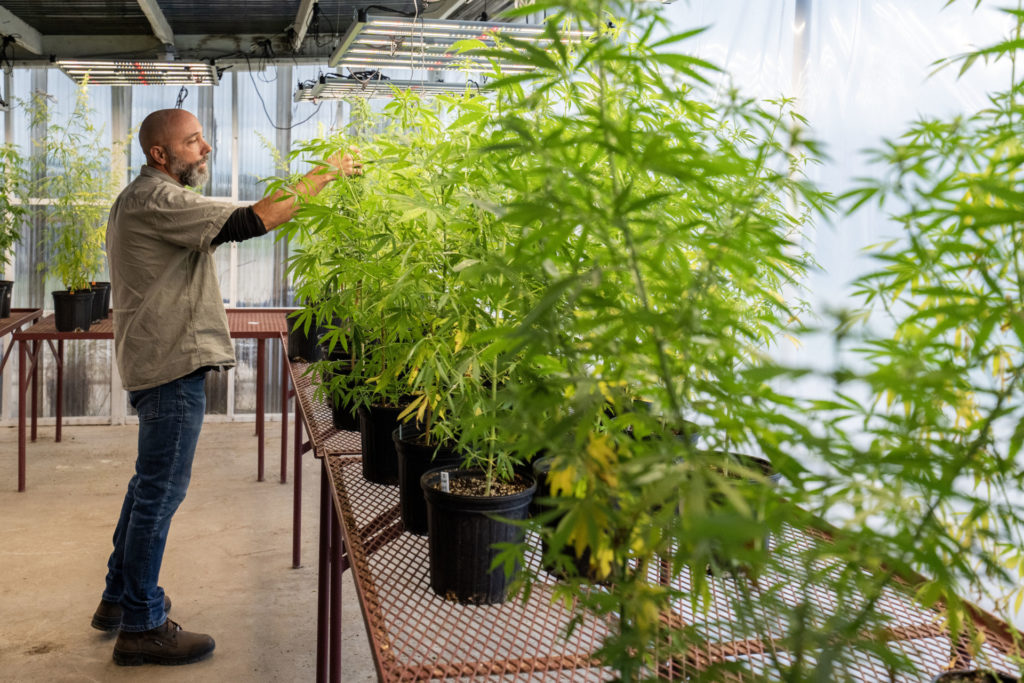Wanted: A breed of hemp plants that can thrive despite Texas heat and drought while staying within the law

Texas growers tried hemp. They used Colorado germplasm and European germplasm without much success. Now a team of Texas A&M AgriLife breeders is trying to fill a gap in breeding that hasn’t been met in Texas for more than 60 years.
Russ Jessup, Texas A&M AgriLife Research hemp breeder in the Texas A&M Department of Soil and Crop Sciences, aims to develop hemp cultivars specifically for Texas that are heat and drought-stress tolerant and will meet legal requirements consistently.
A U.S. Department of Agriculture National Institute of Food and Agriculture grant, Compliant Hemp Accelerated Improvement Network, CHAIN, will be used to establish a diverse, public Hemp Conversion Program germplasm collection.
Jessup said the goal is to create a collection that incorporates most genetic variation across all cannabis within C. sativa that will benefit farmers with high-yielding cultivars, biofuel refineries with reliable feedstocks, customers with quality products, and society with beneficial ecosystem services. It is a two-year grant. By the end of 2023, Jessup expects to release between 10 and 20 lines. And the goal for 2024 is to release 20 to 50 more.
Lack of uniformity and regional adaptation are the two most significant issues with hemp that have made farmers in the market struggle, Jessup said. “If you can overcome adaptation and uniformity, I think the farmers and the markets will follow.”
“Farmers are willing to give it a shot, but they’ve learned very quickly that hemp doesn’t do well in the southern U.S. because of the heat and drought stress,” he said. “And they’re also not a big fan of it because it is not uniform in production. If you plant a big field of it, it’s not as uniform as corn, sorghum, cotton or the other major crops. There is nonuniformity in the available cultivars.”
For the most part, Jessup said, if hemp growers raise a CBD crop, they’re growing varieties from Colorado, Oregon or Europe.
“And those do OK until you get south of Amarillo, and there is a dividing line of latitude and temperature to where they will do one of two things: they flower too early, which decreases your yield, or they’ll produce too much THC and are non-compliant,” Jessup said. “So, both of those are risks.”
For the fiber and grain markets, very little hemp has been grown in Texas. What has been grown is out of Europe, which has the same problem of flowering too early, or material from Australia and China, which, so far, has not been reliably compliant.
Most current industrial hemp cultivars were developed in Europe or northern latitudes and have strong photoperiod responses that induce reproductive growth as days shorten, he said. This leads to premature flowering at southerly U.S. latitudes and crops with little to no value.
“There’s been no breeding work on cannabis in Texas for more than 60 years because it was banned,” Jessup said, adding that the newly formed U.S. National Plant Germplasm System, NPGS,hemp germplasm collection currently includes only a handful of accessions, none of which are fiber or grain types.
So far, NPGS has one CBD type called Cherry Wine, another called Hempress, and a handful of feral Iowa collections that are better adapted to areas further north than Texas, he said.
“Our goal with the Compliant Hemp Accelerated Improvement Network is to publicly release and evaluate a collection of novel accessions produced by Texas A&M AgriLife’s Hemp Conversion Program, HCP, alongside other candidate materials, to identify germplasm well adapted to the southern U.S.,” he said. “We’re trying to fill a gap that has not yet been served to the breeding programs in the southern U.S.”

